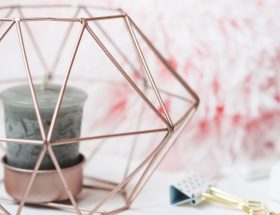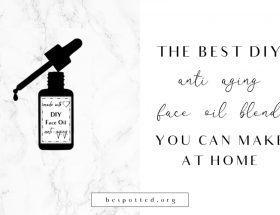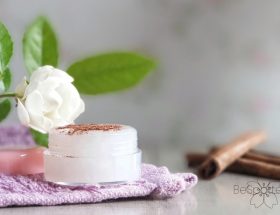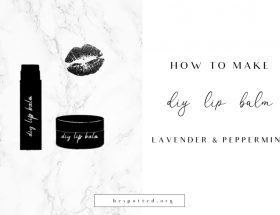This post may contain affiliate links. Any sales made through such links will reward me a small commission – at no extra cost for you!
DIY hot oil hair treatment – benefits of hot oils for your hair, which oils to use and how to prepare them, all the steps of an at-home hot oil treatment, should you apply the oils to wet or dry hair, for how long to leave it in your hair and everything else you should know…
Whether your hair is naturally dry and frizzy or it became damaged due to frequent blow drying, flat-ironing and dyeing, you’ll hardly find a better remedy for it than natural oils.
Pure, organic, unrefined oils can help you repair and restore your strands, fix split ends, improve the condition of your scalp and get a strong, soft, voluminous and glowing hair.
Hot oil hair treatment is one of the most popular salon treatments. But you can also do a hot oil treatment at home and save some bucks while still making your hair soft, smooth, vibrant, healthy and beautiful.
Which Oils to Use and Why?
DIY hot oil treatment has numerous benefits for your hair. Unlike cold oils, hot oils can penetrate the hair shaft much better and deeply nourish the hair. That is why warming up the oils multiply the benefits of each oil you use.
For this recipe, we will be using olive oil, coconut oil, castor oil and optionally lavender essential oil. Each of these oils benefits your hair in its own way.
Olive oil
Olive oil is a very rich natural oil that almost all of us have at home. It deep moisturizes and nourishes your hair and provides it with many nutrients and antioxidants.
Olive oil improves the blood flow in your scalp, prevents dandruff and keeps the scalp healthy. That way, it prevents hair loss and promotes new hair growth. It also strengthens your hair and adds shine.
If you want, you can replace olive oil with sweet almond oil or avocado oil.
Coconut oil
Coconut oil benefits your hair in many ways. It penetrates the cortex and sinks deep into the hair shaft. That way, it nourishes even the deeper layers of the hair, making it strong and elastic.
Coconut oil hydrates the hair and helps you tame the frizz. It repairs the damaged hair and makes it healthy, bouncy and voluminous again. DIY hot oil treatment with coconut oil can give a new life to your hair and DIY coconut oil hair masks can maintain your hair soft and manageable in between treatments.
Castor oil
Castor oil is, hats down, one of the best oils for dry, damaged or frizzy hair. Thick and sticky as it is, you’d hardly think it would be a good idea to put it in your hair. However, castor oil can treat a range of hair problems and give you that beautiful, healthy hair you dream of.
Castor oil contains vitamin E and many nourishing fatty acids, out of which ricinoleic acid is most beneficial for your hair. This oil stimulates hair growth, improves flexibility, moisturizes and soothes the scalp and makes your hair incredibly rich, thick, strong and glowing.
You can replace castor oil with argan, jojoba or macadamia oil.
Lavender essential oil
Adding lavender essential oil to this DIY hot oil hair treatment is not necessary, but it can certainly add an extra special note to this luxurious treatment. Lavender oil conditions the hair and promotes the hair’s health and growth, plus it smells divine.
You can replace lavender essential oil with rosemary, peppermint or any other essential oil you prefer for hair care. You can also completely omit essential oils from of this DIY hot oil hair treatment.
How to Do Hot Oil Hair Treatment in 5 Steps:
For this hot oil hair treatment recipe, you will need:
- 3 tablespoons olive oil
- 2 tablespoons coconut oil
- 1 tablespoon castor oil
- 10 – 15 drops lavender essential oil – optional
Of course, you’ll have to adjust the amounts of the ingredients to the length and thickness of your hair. But make sure that there is enough oil to completely cover your hair and generously coat it from root to tips.
Once you have all the ingredients ready, you can do the hot oil treatment in 5 simple steps:
Diy Hot Oil Treatment – Step #1
First, prepare yourself for the hot oil treatment. Untangle your hair. (If your hair is full of products, you should wash it before the treatment. The hair products residue may prevent the oils from penetrating the hair).
Protect your clothes by wrapping a towel around your shoulders or wear some old t-shirt.
Diy Hot Oil Treatment – Step #2
Warm up the oils. In a double boiler, put olive oil, coconut oil and castor oil. Let the oil mixture warm up to very warm, but so that you can still touch it with your finger without it burning your skin.
Remove from the heat and, if you want, add lavender essential oil. Stir everything well together.
Diy Hot Oil Treatment – Step #3
One of the most often questions is whether you should apply hot oil treatment to wet or dry hair. You can do either, but you’ll get the best results if your hair is only slightly damp. It shouldn’t be completely wet.
Apply the oil with your fingers, first to your scalp, then work it downwards towards the ends of your hair.
Diy Hot Oil Treatment – Step #4
Take your time to thoroughly massage the oils into your scalp and hair. Do this for at least 5 minutes. Then cover your hair with a shower cap and wrap it in a warm towel.
Leave the oils in your hair for 30 – 45 minutes. During that time, you can occasionally warm up the towel and your hair with a hairdryer.
Diy Hot Oil Treatment – Step #5
Now the oils have worked their magic. All that is left for you to do is wash and condition your hair. Blow dry and style it as usual.
Enjoy your healthy, soft, smooth and beautiful hair in the weeks to come and when the effect starts to wear off, repeat the hot oil treatment.
READ NEXT: BEST DIY HAIR MASKS FOR CURLY HAIR
READ NEXT: DIY LEAVE IN HAIR MOISTURIZER















What do you do to make sure the oil won’t weigh down your curls?
Hi Rachel,
As long as I wash my hair well after the treatment, I don’t have a problem with that.